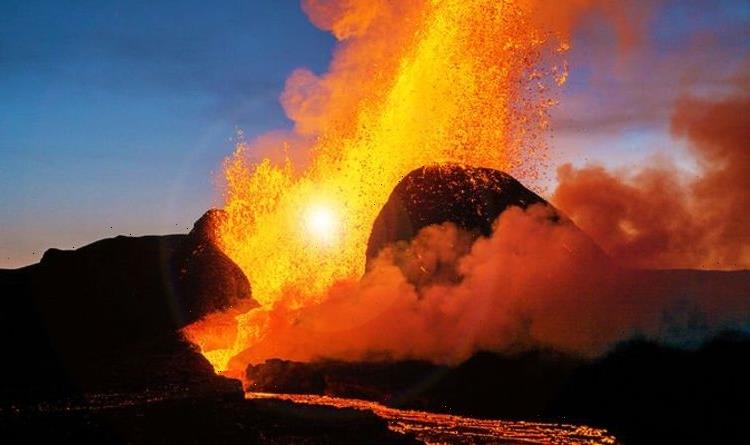Iceland: Lava pours from Fagradalsfjall during eruption
When you subscribe we will use the information you provide to send you these newsletters. Sometimes they’ll include recommendations for other related newsletters or services we offer. Our Privacy Notice explains more about how we use your data, and your rights. You can unsubscribe at any time.
YouTuber and drone operator Joey Helms got more than he bargained for when he tried to get an up-close view of the volcano in southeast Iceland. Fagradalsfjall has been bubbling away since mid-March this year, spewing jets of molten rock into the air. The erupting volcano has proven a hit with locals and tourists alike, attracting nature lovers, photographers and filmmakers from across the world.
Mr Helms tried his luck last month, flying his drone over the gushing volcano to get a “unique” glimpse of its crater.
The video, which he shared on YouTube, begins with a wide shot of the drone slowly flying over the lava stream pouring from the crater.
As the drone creeps closer to the volcano’s edge, it becomes easy to see why this would prove to be its last flight.
A plume of smoke is rising and lava is violently fountaining in the crater, rushing to the surface from deep underground.
https://www.youtube.com/embed/j18ECUhkeY0
Mr Helms explained on his YouTube channel: “FPV drones are notorious for crashing, it is part of the hobby.
“So in an effort to get a unique vantage point and perspective into the crater, we flew this remarkably capable drone as close to the lava and river and caldera as possible.
“One of it turned out to be its very last flight.”
Luckily for us, the drone managed to record HD footage of the fountaining lava right up until the moment of its incineration.
The video then repeats in slow motion and at the last moment cuts
out as the drone is fried, and a “video signal lost” warning appears on the screen.
Mr Helms said: “This unique HD footage provides a rare view right into the volcano’s caldera and lava fountain during one of its geyser-like eruptions.”
Fagradalsfjall, which sits about 25 miles from Iceland’s capital, Reykjavik, began erupting on March 19 this year.
The volcano has been dormant for some 900 years and its eruption was met with a great deal of excitement.
Unlike the disruptive eruption of Eyjafjallajökull in 2010, Fagradalsfjall’s eruption was a fairly uneventful event.
The eruption was preceded by a swarm of earthquakes, one of which hit a strong magnitude 6.6.
The tremors were most likely caused by an intrusion of magma under Iceland’s Reykjanes peninsula.
As of June 1, the volcano is still releasing fresh lava.
According to the Iceland Met Office, five fissures have opened at the volcano since April 13.
There is some concern about the release of noxious gasses from the volcano, including sulphur (SO2 and SO4).
Forecasters advised against walking dogs in the area as they are more exposed to the pollution due to being so close to the ground.
The Iceland Met Office said: “Gas pollution at the eruption site can at any time exceed danger levels.
“The eruptive plume follows the wind direction, and it is, therefore, safer to watch the eruption with the wind direction behind you, rather than towards you.”
Other volcanic gases such as carbon dioxide and carbon monoxide also make any trips to Fagradalsfjall a hazard and certain areas around the volcano are inaccessible.
Source: Read Full Article




